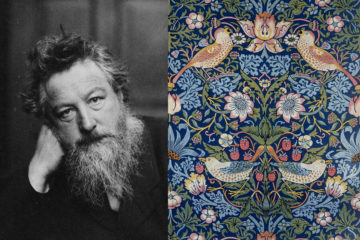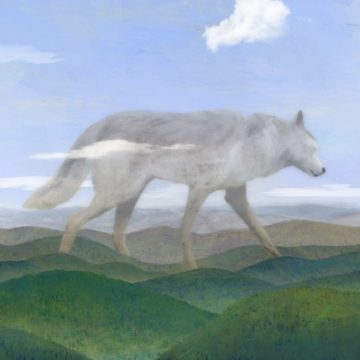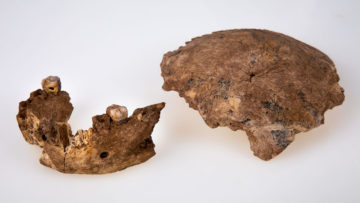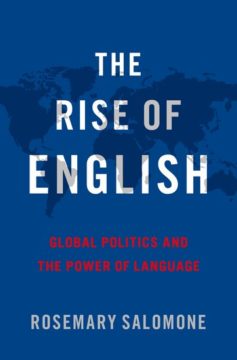Animal Planet
“I am the master of this universe, my fun and frolic are the only things that matter, besides which there is no other truth or mystery, inside this creation,”— Whenever the modern man thinks like this, he turns into a beetle. A stout, strong black beetle of the Amazon basin. He roams the branches of the rubber trees with a snobbish swagger. He sits in a coffee house of Rio de Janeiro, wearing spectacles and a grave expression on his face, indulging in intellectual discourse about musk and Michel Foucault. In fact that coffee house is nothing but a tall branch of a huge rubber tree, under which flows the river Amazon. And in the water of that river swims a ‘water-monkey’ fish. The fish has two very long beards on its chin. Amid the dense rainforest, suddenly the water-monkey fish jumps from the water up to a height of six feet in the air, neatly gobbles up the beetle in its mouth, and disappears under the waters of the river Amazon.
by Ranajit Das
from Sandhhyar Pagol (Lunatic of the Dusk)
publisher Saptarshi Prakashan, Kolkata, 2004
translation (original here): 2011, Nirmal Kanti Bhattacharjee

 Behind the exquisite floral wallpaper lurks a social reformer. British designer William Morris (1834-96) is today best known for his lush, garden-inspired patterns for wall coverings, but his lifework encompassed far more than mere decoration. He sought nothing less than to overturn what he considered the deleterious effects of industrialization on Victorian society. And his artistic influence continues today, not only at London’s Victoria and Albert Museum, an institution he helped shape, but also as inspiration to contemporary artists.
Behind the exquisite floral wallpaper lurks a social reformer. British designer William Morris (1834-96) is today best known for his lush, garden-inspired patterns for wall coverings, but his lifework encompassed far more than mere decoration. He sought nothing less than to overturn what he considered the deleterious effects of industrialization on Victorian society. And his artistic influence continues today, not only at London’s Victoria and Albert Museum, an institution he helped shape, but also as inspiration to contemporary artists. Underground creepy crawly state. Bosom malignancy. Sun oriented force. These might sound like expressions from a work of fiction, but they are actually strange translations, pulled from the scholarly literature, of scientific terms — ant colony, breast cancer and solar energy, respectively. Guillaume Cabanac, a computer scientist at the University of Toulouse, France, spots such bizarre phrases in academic papers every day.
Underground creepy crawly state. Bosom malignancy. Sun oriented force. These might sound like expressions from a work of fiction, but they are actually strange translations, pulled from the scholarly literature, of scientific terms — ant colony, breast cancer and solar energy, respectively. Guillaume Cabanac, a computer scientist at the University of Toulouse, France, spots such bizarre phrases in academic papers every day. About 30 minutes into his new concert film Blackalachia,
About 30 minutes into his new concert film Blackalachia,  Of course, he was looking for love. Aren’t we all? And he seemed to be looking for it in all the right places—namely, the southern coastal counties of California, where he was, literally, the lone wolf, with seemingly no male competitors at all. In fact, OR-93 (2019-2021) was the first gray wolf to appear in the region for two or three hundred years. The absence of rivals was good news for him, but the rest of the equation was hopeless, because there were apparently no female counterparts for him to encounter there, either—no one to meet and mate with. To be honest, OR-93’s journey from his birthplace, in Oregon, to California was reproductively doomed from the start. He could have crossed party lines with a wayward labradoodle or a lusty mountain
Of course, he was looking for love. Aren’t we all? And he seemed to be looking for it in all the right places—namely, the southern coastal counties of California, where he was, literally, the lone wolf, with seemingly no male competitors at all. In fact, OR-93 (2019-2021) was the first gray wolf to appear in the region for two or three hundred years. The absence of rivals was good news for him, but the rest of the equation was hopeless, because there were apparently no female counterparts for him to encounter there, either—no one to meet and mate with. To be honest, OR-93’s journey from his birthplace, in Oregon, to California was reproductively doomed from the start. He could have crossed party lines with a wayward labradoodle or a lusty mountain  There is something to be said about a truly disastrous meal, a meal forever indelible in your memory because it’s so uniquely bad, it can only be deemed an achievement. The sort of meal where everyone involved was definitely trying to do something; it’s just not entirely clear what.
There is something to be said about a truly disastrous meal, a meal forever indelible in your memory because it’s so uniquely bad, it can only be deemed an achievement. The sort of meal where everyone involved was definitely trying to do something; it’s just not entirely clear what. A long-standing argument that Homo sapiens originated in East Africa before moving elsewhere and replacing Eurasian Homo species such as Neandertals has come under increasing fire over the last decade. Research this year supported an alternative scenario in which H. sapiens evolved across vast geographic expanses, first within Africa and later outside it.
A long-standing argument that Homo sapiens originated in East Africa before moving elsewhere and replacing Eurasian Homo species such as Neandertals has come under increasing fire over the last decade. Research this year supported an alternative scenario in which H. sapiens evolved across vast geographic expanses, first within Africa and later outside it. India and Pakistan have an impressive record of cooperation and peace initiatives. Virtually every bilateral problem they had before 1964 – except
India and Pakistan have an impressive record of cooperation and peace initiatives. Virtually every bilateral problem they had before 1964 – except  A NASA spacecraft has entered a previously unexplored region of the Solar System — the Sun’s outer atmosphere, or corona. The long-awaited milestone, which happened in April but was announced on 14 December, is a major accomplishment for the Parker Solar Probe, a craft that is flying closer to the Sun than any mission in history. “We have finally arrived,” said Nicola Fox, director of NASA’s heliophysics division, located at the agency’s headquarters in Washington DC. “Humanity has touched the Sun.”
A NASA spacecraft has entered a previously unexplored region of the Solar System — the Sun’s outer atmosphere, or corona. The long-awaited milestone, which happened in April but was announced on 14 December, is a major accomplishment for the Parker Solar Probe, a craft that is flying closer to the Sun than any mission in history. “We have finally arrived,” said Nicola Fox, director of NASA’s heliophysics division, located at the agency’s headquarters in Washington DC. “Humanity has touched the Sun.” “A happy family,” so
“A happy family,” so  For much of the previous millennium, a pidgin language was used around the Mediterranean for trading, diplomatic, and military purposes. Based originally on Italian and Occitano-Romance languages, it had indirect ties to the Germanic Franks and thus gained the term lingua franca.
For much of the previous millennium, a pidgin language was used around the Mediterranean for trading, diplomatic, and military purposes. Based originally on Italian and Occitano-Romance languages, it had indirect ties to the Germanic Franks and thus gained the term lingua franca. There’s been a lot of great coverage of Omicron so far, but with the data we have, we can’t change our behavior at all. It’s not actionable. We’re missing one fundamental piece of information. It’s the Omicron question. This article will look at what we know so far to zero in on that big question.
There’s been a lot of great coverage of Omicron so far, but with the data we have, we can’t change our behavior at all. It’s not actionable. We’re missing one fundamental piece of information. It’s the Omicron question. This article will look at what we know so far to zero in on that big question. Paxlovid, Pfizer’s pill to treat Covid-19, retained its 89% efficacy at preventing hospitalization and death in the full results of a study of 2,246 high-risk patients, the company said Tuesday.
Paxlovid, Pfizer’s pill to treat Covid-19, retained its 89% efficacy at preventing hospitalization and death in the full results of a study of 2,246 high-risk patients, the company said Tuesday. At 13, Arnie got a paper route. The work troubled him, however — and not in the usual way a kid might worry about their first adult responsibility. He could never be sure the papers had actually been delivered. “After Arnie had finished a block, he had to go back to be sure that there was a paper on each and every doorstop,” Judith L. Rapoport wrote in
At 13, Arnie got a paper route. The work troubled him, however — and not in the usual way a kid might worry about their first adult responsibility. He could never be sure the papers had actually been delivered. “After Arnie had finished a block, he had to go back to be sure that there was a paper on each and every doorstop,” Judith L. Rapoport wrote in  W
W